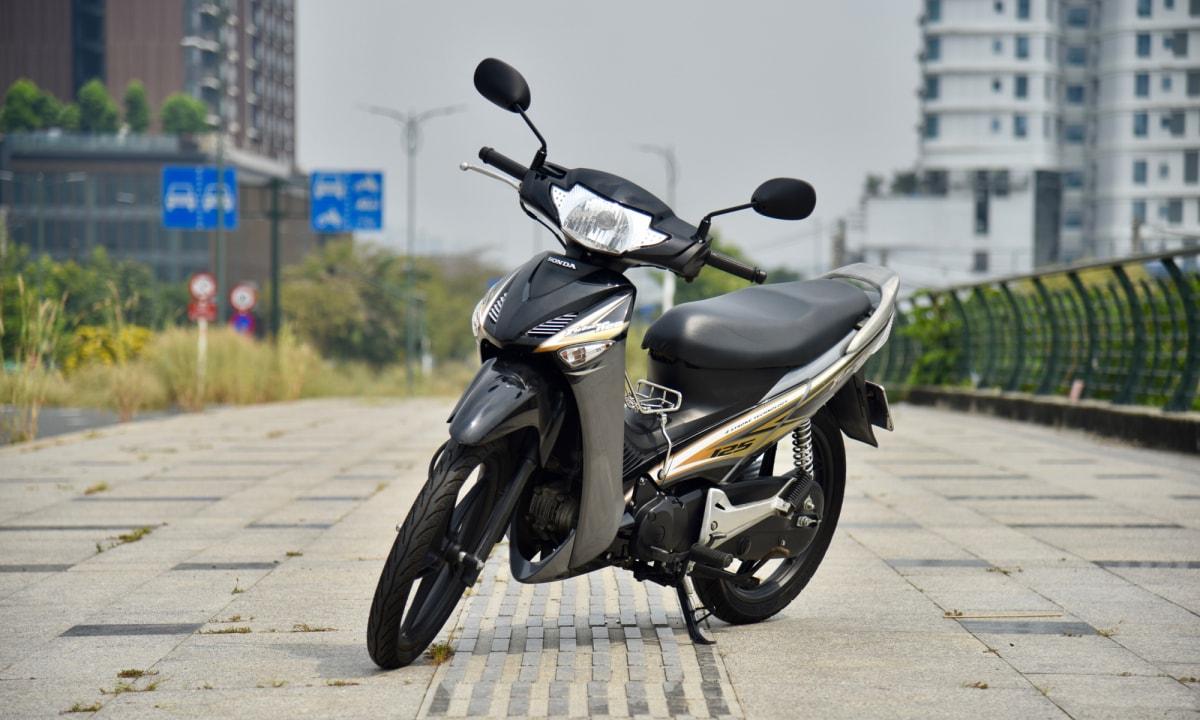
Honda Future Neo was launched in late 2005 in the Vietnamese market. There are 3 versions of the vehicle released each year, including Future Neo (2005), Future Neo GT (2006) and Future Neo Fi (2007). The version in the article is Future Neo GT, the vehicle has traveled more than 80,000 km.
When launched, Future Neo was considered the standard for a mid-range motorbike. The motorbike was equipped with a 125cc engine (from 2007 with electronic fuel injection Fi), completely different from other popular 100-110cc motorbikes on the market, along with modern technologies, rarely applied to motorbikes at that time such as cast rims, electronic clock, magnetic lock for the keyhole cover.
Therefore, the Future line is almost the first name that comes to consumers' minds when talking about a durable, high-quality, and technologically advanced mid-range motorbike from a company that has been around for a long time in Vietnam.
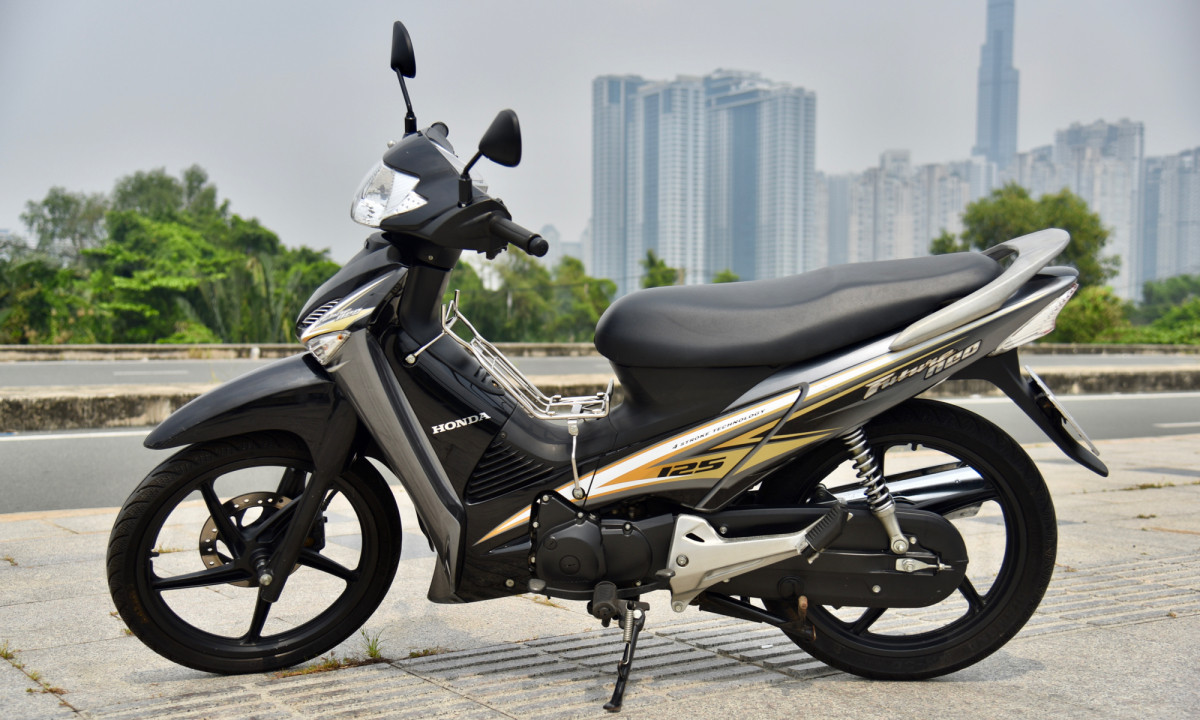
Future Neo has dimensions of length x width x height (mm) of 1,890 x 705 x 1,085, seat height of 767 mm. The 2023 Future 125 Fi model has dimensions of 1,931 x 711 x 1,083, seat height of 756 mm.
With a different design compared to the two previous versions, Future I launched in 1999, Future II in 2004, Future Neo has many modern, neat lines. Because of this, Future Neo has attracted customers of many ages, who need a masculine, durable and durable motorbike. The balance of this generation's design is even considered by many users to be the most beautiful Future ever.
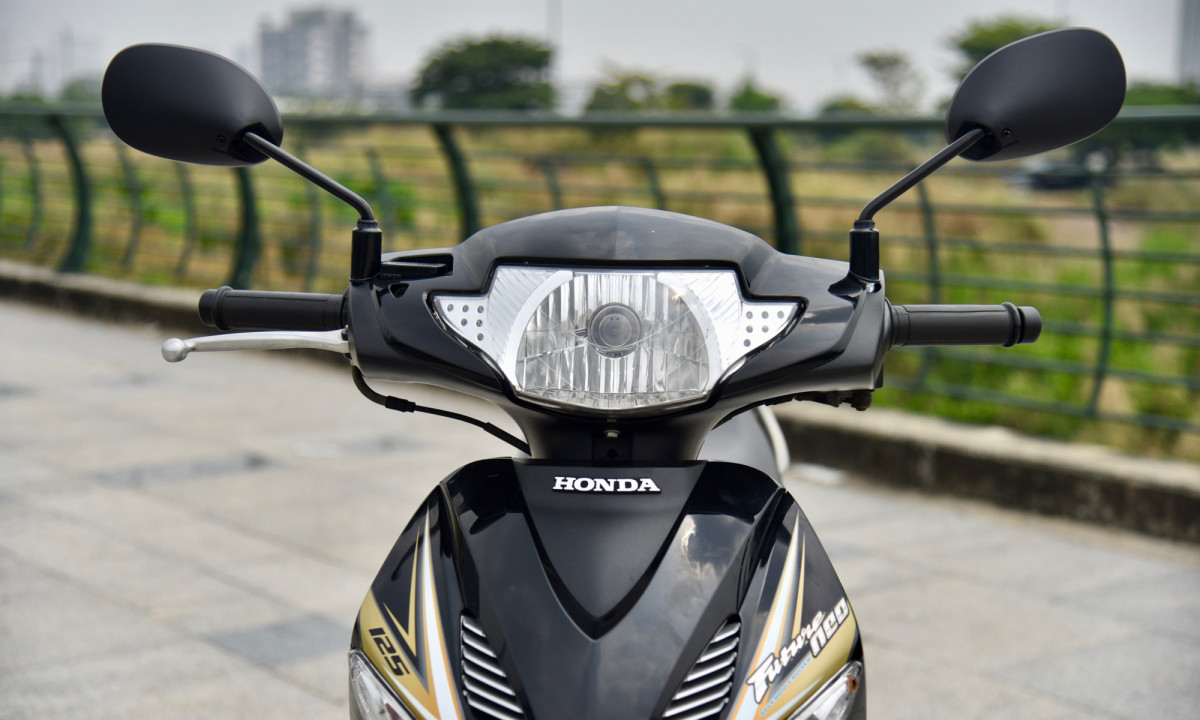
The front of the car has a slim, minimalist design, with only one light bulb. Position lights (or daytime running lights) are a very rare feature on popular cars at this time.
Now after nearly 20 years, the lights are weak, flickering, sometimes bright, sometimes dark when the car is idle.
Yamaha’s competitor, the Jupiter, was launched in 2001, but the Jupiter, like the general style of the company’s products, is quite youthful in design, not suitable for middle-aged people, so its customer base is more limited than the Future. At the same time, 20 years ago, the sentiment about the durability of motorbikes was still leaning towards Honda. It was not until 2012 that the Jupiter had electronic fuel injection, while the Future was introduced in 2007.
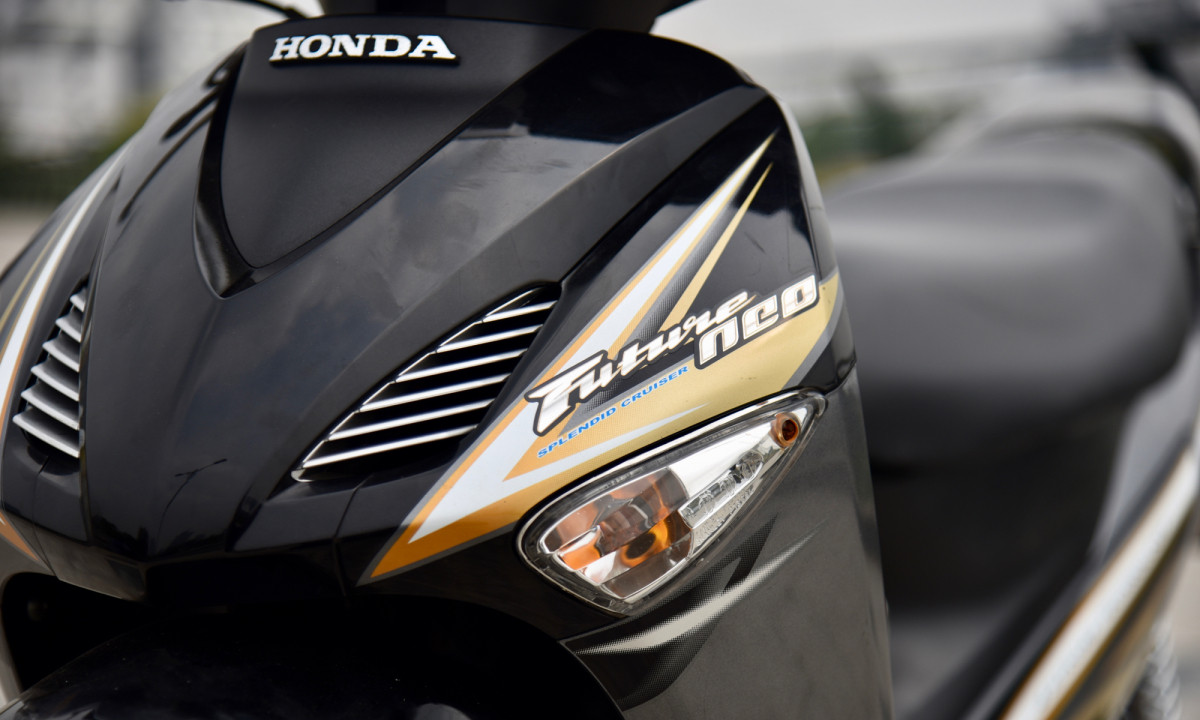
Turn signals are integrated into the fairing. The lighting system on the vehicle is halogen. The black-gray GT version is one of the most sought-after colors when it was launched, along with red-silver-black and gray-white-black.
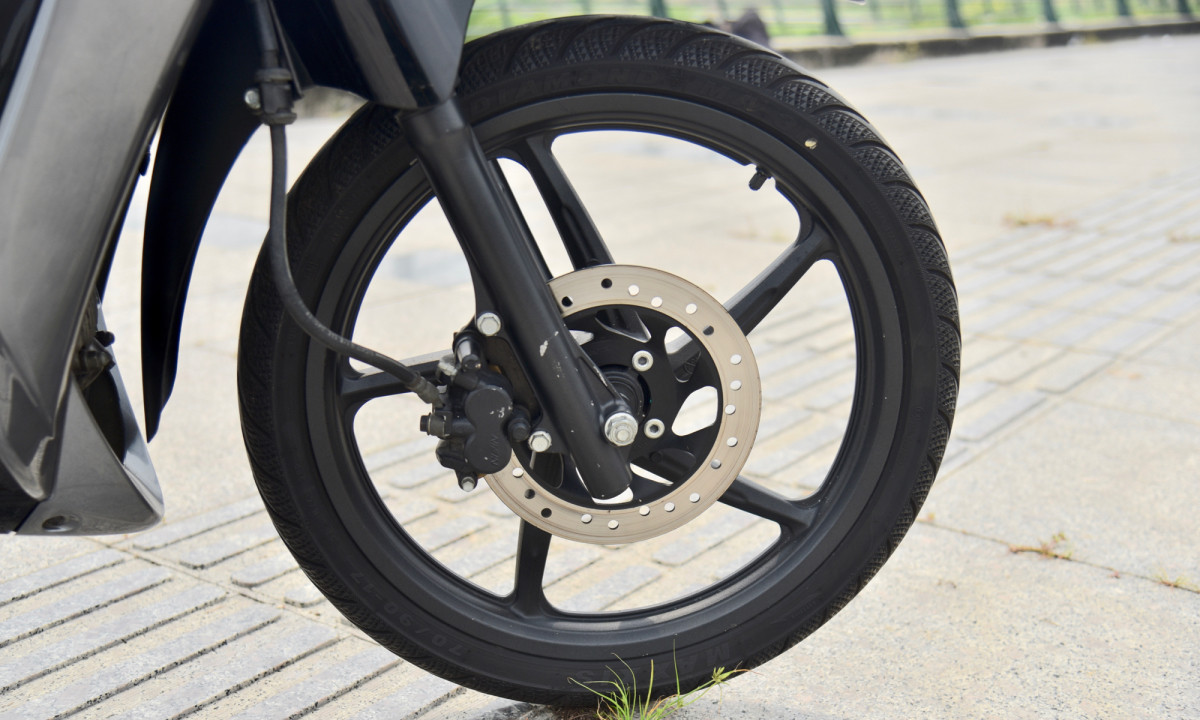
Future Neo GT is the first model equipped with cast rims by Honda Vietnam, increasing the sportiness of the vehicle. This equipment makes the vehicle more elegant, modern, and neat than models using spoke rims, and also helps the vehicle stand out among the fleet of manual transmission vehicles, when almost only scooters and large displacement vehicles use this type of rim.
Both the front and rear wheels are 17-inch, the front wheels are equipped with disc brakes, the rear is drum.
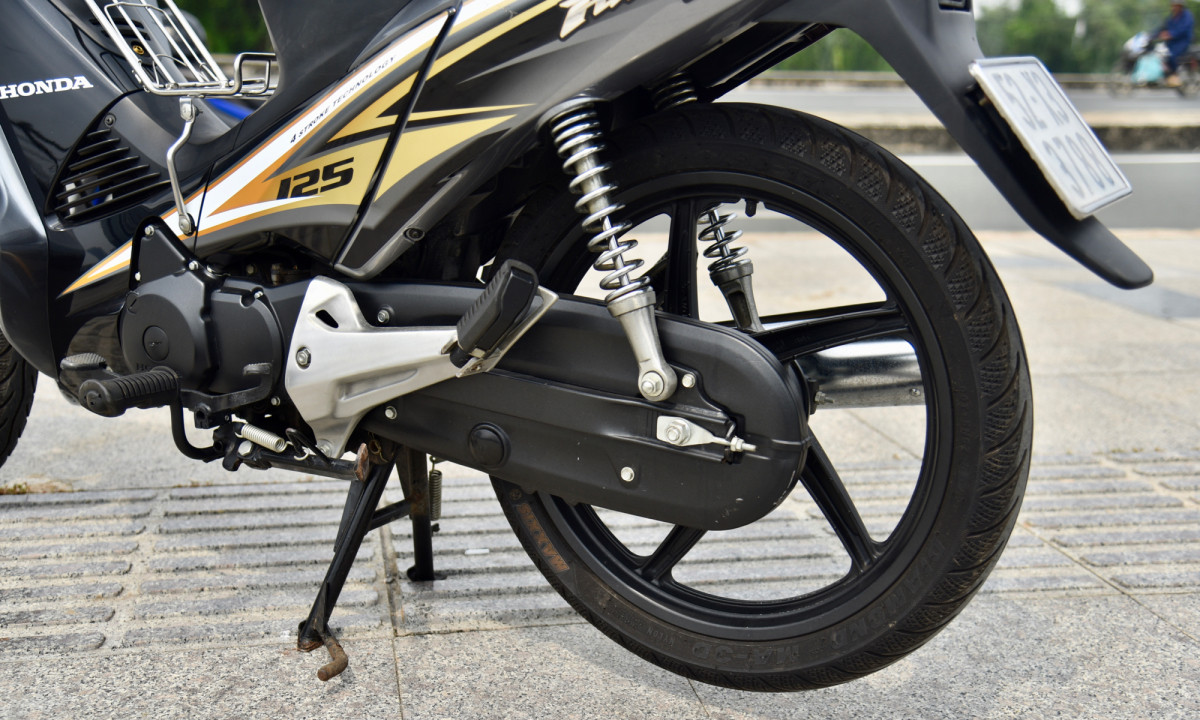
The rear suspension of the vehicle is a double-column spring, hydraulic shock absorber, equipped with a chain cover. The vehicle's suspension system is suitable for traveling from medium to long distances, especially giving a feeling of stability when carrying an additional person in the back.
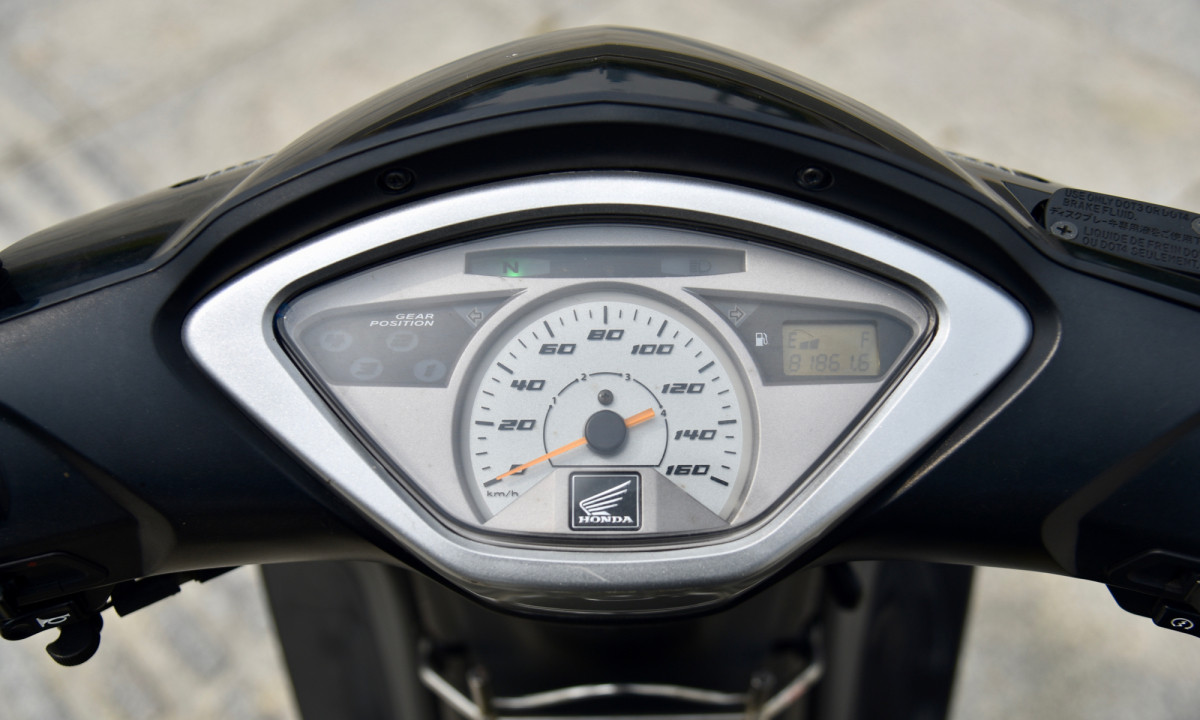
Future Neo is equipped with a mechanical and electronic clock cluster, displaying fuel level and speedometer, one of the rare motorbikes equipped with an electronic clock cluster in 2005-2007. Previous generations of Future used completely mechanical clocks.
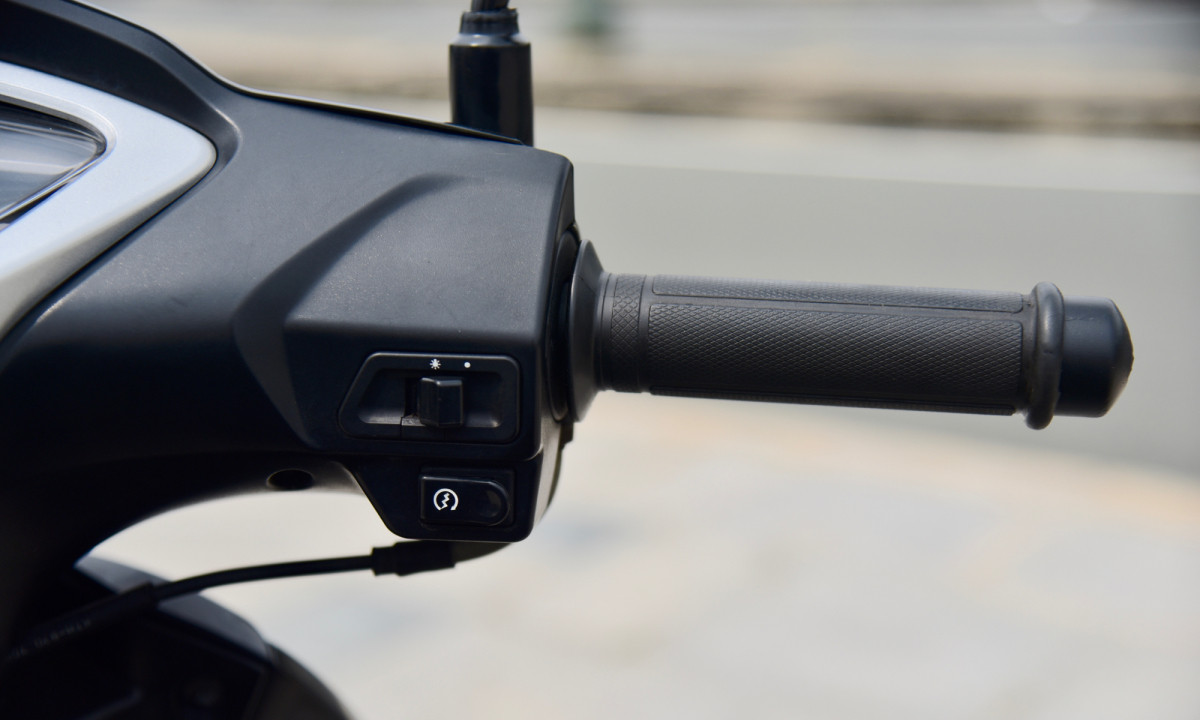
The right handlebar cluster has the start button and the light on/off button. The buttons are small and not ergonomically focused like newer cars.
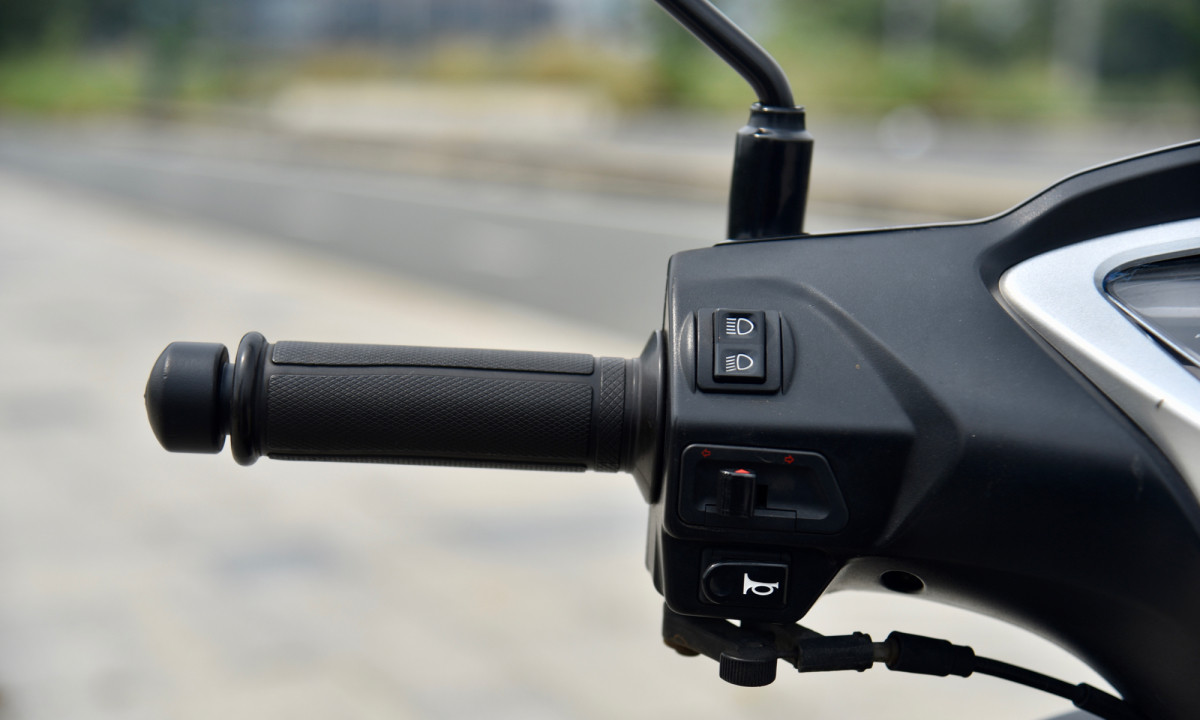
The left handlebar includes the light switch, turn signal, horn, and choke lever.
The choke lever is a common feature on manual transmission vehicles using carburetors, making it easier to start the vehicle in cold weather. When the lever is pulled, the choke is closed, the gas mixture entering the combustion chamber is now rich in gasoline, making the vehicle easier to start. The Fi version does not have this feature.
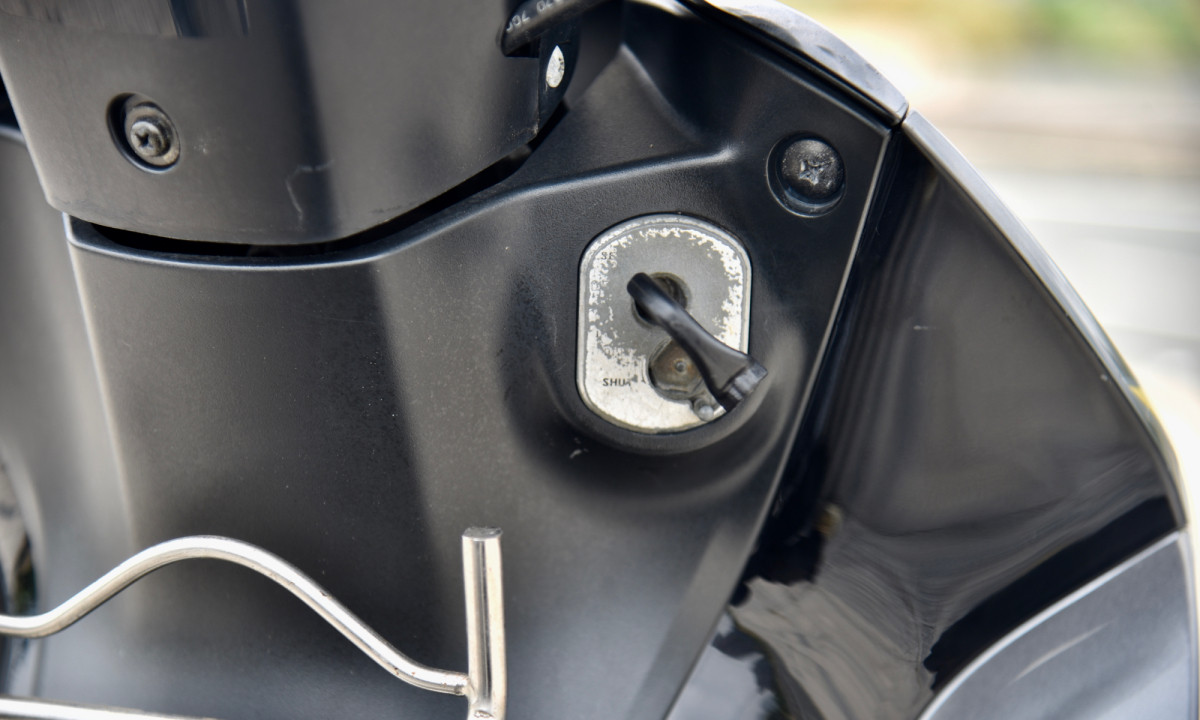
The vehicle is equipped with a magnetic lock system with 4 functions, which is a feature that increases convenience for the driver when he can turn the engine on and off, pull the anti-theft lock cover, lock the neck, and open the saddle with just this lock cluster.
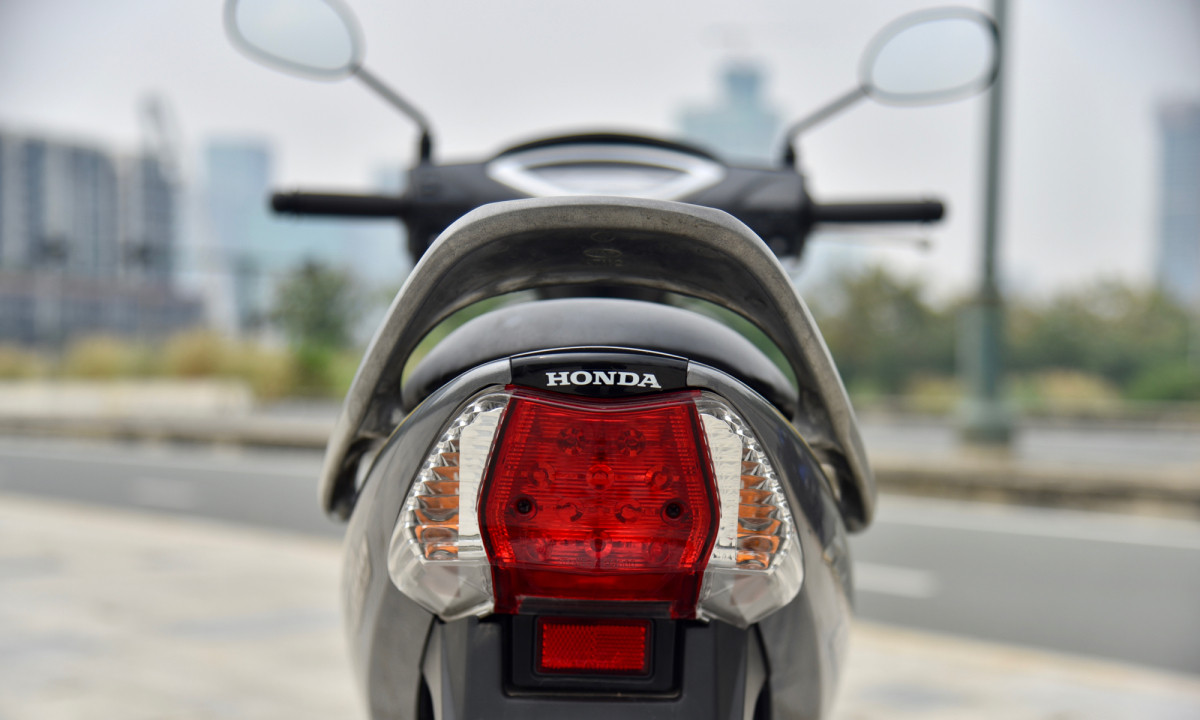
The rear of the car is not fussy, the taillights are large and easy to see. The handlebars are large and easy to hold.
Future was the choice for people who had more money than a regular Wave Alpha, but did not like scooters because of their feminine appearance or fuel consumption according to the concept at that time. Owning a Future at that time was often considered a "rich" person.
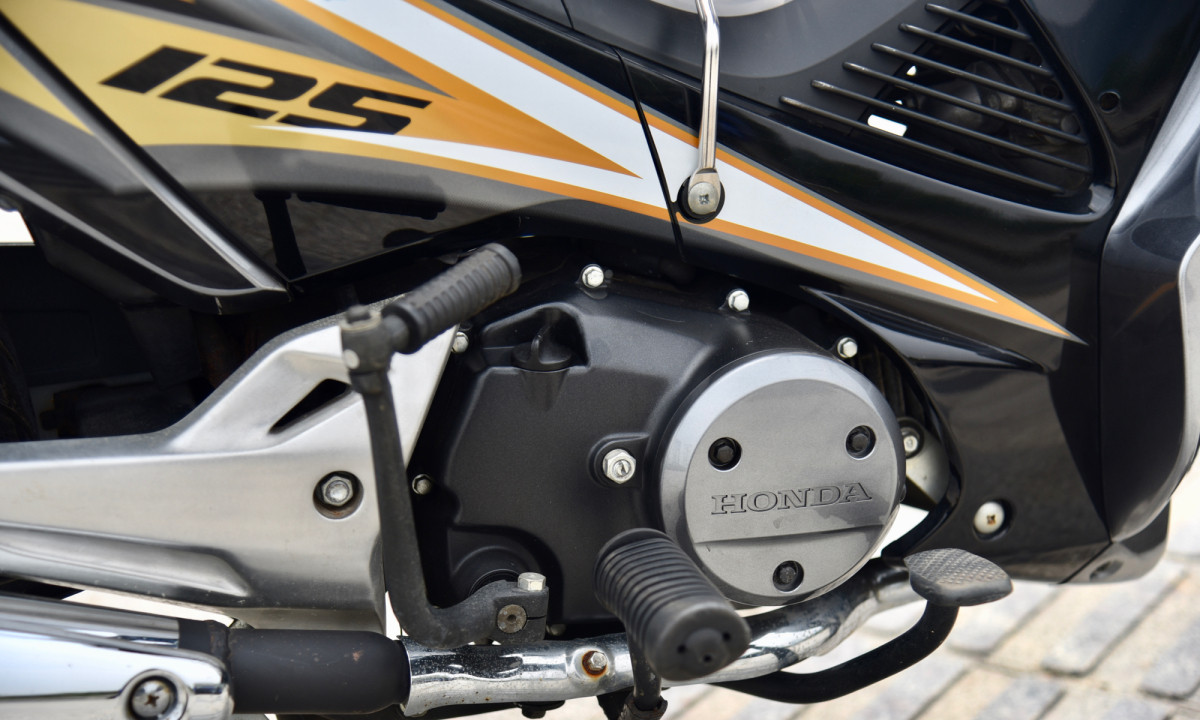
Future Neo is equipped with a 125cc, 4-stroke, 4-speed engine, 9 horsepower, 9 Nm torque. Fuel tank capacity 3.7 liters. Kick start. Neo and Neo GT versions use carburetors, Neo Fi uses electronic fuel injection technology. It can be said that the 125cc engine block was high-end at that time, when other popular manual transmission and scooters only used 100-110cc engines.
The 125cc engine block that Honda has used since the Future II model is considered to be healthy, fuel-efficient and smooth. After nearly two decades, the vehicle still starts after one push of the starter, however, there are some minor problems such as a little white smoke coming from the exhaust pipe when operating, caused by piston rings being loose and natural wear.
In terms of control, the front of the car vibrates a bit at the first throttle, but is smooth when the car accelerates to about 30 km/h.
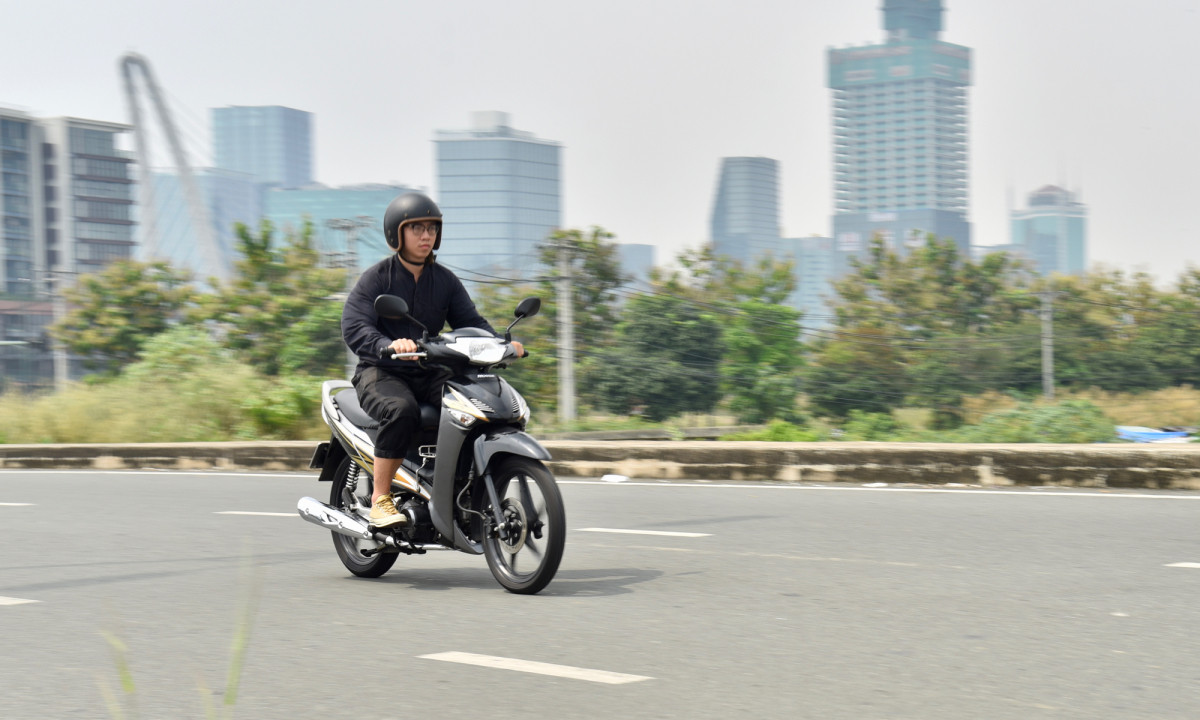
The characteristic of this generation of Future when operating is that the engine is stronger, more powerful and especially the gear shifting is very smooth and the noise is light, not "clack-clack" noisy like Wave. With Future, the driver sometimes only needs to move the toe slightly to be able to shift gears without using much force, bringing a much lighter and more elegant driving experience than its younger sibling.
After nearly two decades, the vehicle in this article has some minor faults such as easily getting stuck when shifting from 3rd to 4th gear, flickering lights, and a vibrating head. Apart from these faults, the Future is a vehicle with few minor faults and is easy to repair and replace parts.
Currently, the price of used Future Neo on the market is about 15-25 million VND, some vehicles are advertised for sale for 30-40 million VND, the reason is that they are used little and have not been affected by the engine.
At the time of launch, Future Neo was priced at 22.5-24 million VND, depending on the paint color, equipped with front drum/disc brakes.
According to VnExpress

